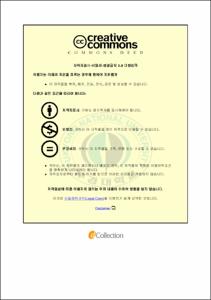CO2를 2차 냉매로 사용하는 간접 냉동시스템의 성능특성에 관한 실험적 연구
- Abstract
- In indirect refrigeration system the evaporator does not absorb heat directly from the object to be cooled but through a secondary cold refrigerant. This system is mainly employed by large supermarkets and large cold storage. The reason is using direct refrigeration system will result in high pressure drop and refrigerant charge because it will need a large sized evaporator. In direct refrigeration system there are refrigerant leakages which increases refrigerant costs and also cause environmental problems if the refrigerant in use is not natural. For these reasons, indirect refrigeration system which uses secondary refrigerant is better for large supermarkets and large cold storage. However, the viscosity of secondary refrigerant used in existing indirect refrigeration systems increases with decreasing evaporation temperature, so it requires a bigger pump power. Thus, a secondary refrigerant with constant or decreasing viscosity while evaporation temperature decreases is better to reduce pump power. An ideal alternative is CO2.
In this paper, an experimental analysis on the performance of an indirect refrigeration system which uses CO2 as secondary refrigerant and R404A as primary refrigerant is carried out and the data computed to aid further studies in this field. The analysis was performed in two ways. Firstly, the coefficient of performance (COP) in different operating conditions was analysed to find optimal design conditions in the system. Secondly, the exergy losses for the system components were analysed to help improve the performance of the components with most losses for an increase COP. Results indicated that, the COP of the indirect refrigeration system decreases with decreasing CO2 evaporating temperature thereby increasing R404A condensing temperature and CO2 cooler temperature difference. In addition, the COP does not change with change in mass flow rate of CO2. Finally, regardless of the operating conditions, the compressor contributed about 55% of the total exergy loss followed by the R404A condenser which was about 20%. Therefore, to improve the COP of the indirect refrigeration system, the compressor and R404A condenser must be designed to minimize exergy losses.
- Issued Date
- 2014
- Awarded Date
- 2014. 2
- Type
- Dissertation
- Publisher
- 부경대학교
- Affiliation
- 대학원
- Department
- 대학원 냉동공조공학과
- Advisor
- 오후규
- Table Of Contents
- Abstract ⅲ
List of figures, photographs and tables ⅴ
Nomenclature ⅸ
제 1 장 서 론 1
1.1 연구배경 1
1.2 2차 냉매로서 CO2의 특성 4
1.2.1 CO2의 열물성 4
1.2.2 CO2의 장단점 5
1.3 종래연구 8
1.4 연구목적 및 내용 10
제 2 장 실험장치 및 방법 11
2.1 실험장치의 구성 11
2.2 실험방법 및 조건 17
2.3 데이터 해석방법 18
제 3 장 결과 및 고찰 22
3.1 2차 냉매의 펌프소비동력, 열전달계수, 질량유량의 비교 23
3.2 CO2를 2차 냉매로 사용하는 간접 냉동시스템의 성능 특성 31
3.2.1 R404A 응축온도의 영향 31
3.2.2 내부열교환기 효율의 영향 32
3.2.3 CO2 냉각기온도차의 영향 36
3.2.4 CO2 증발온도의 영향 37
3.2.5 CO2 질량유량의 영향 40
3.3 CO2를 2차 냉매로 사용하는 간접 냉동시스템의 엑서지 특성 42
3.3.1 각 실험조건에 따른 구성기기의 엑서지 손실 42
3.3.2 엑서지 손실과 성능계수의 관계 49
3.3.3 각 구성기기의 엑서지 손실 비교 및 개선 방법 52
제 4 장 결 론 55
참 고 문 헌 57
감사의 글 61
- Degree
- Master
- Files in This Item:
-
-
Download
 CO2를 2차 냉매로 사용하는 간접 냉동시스템의 성능특성에 관한 실험적 연구.pdf
기타 데이터 / 4.78 MB / Adobe PDF
CO2를 2차 냉매로 사용하는 간접 냉동시스템의 성능특성에 관한 실험적 연구.pdf
기타 데이터 / 4.78 MB / Adobe PDF
-
Items in Repository are protected by copyright, with all rights reserved, unless otherwise indicated.